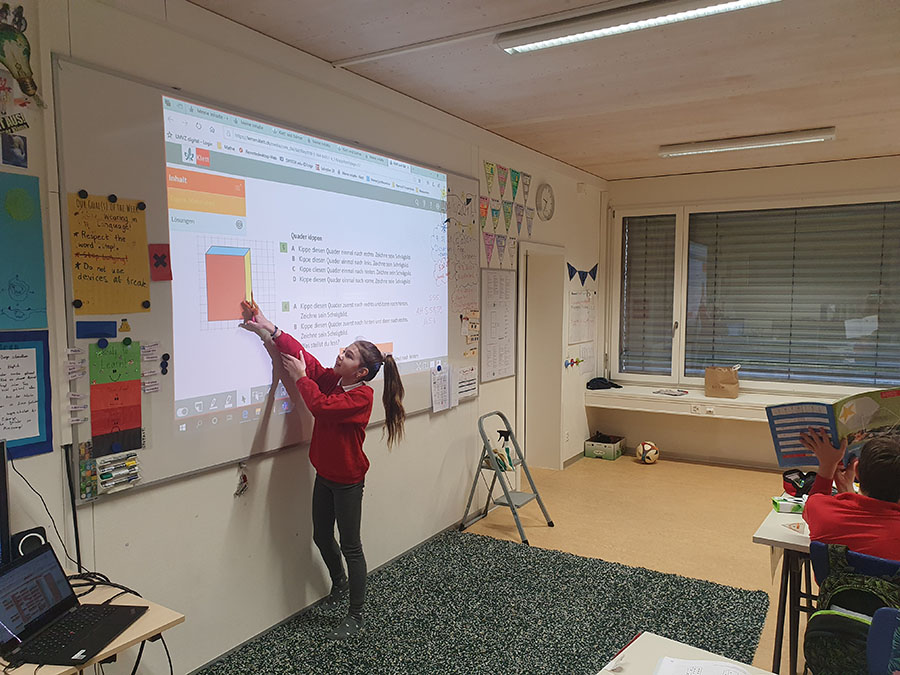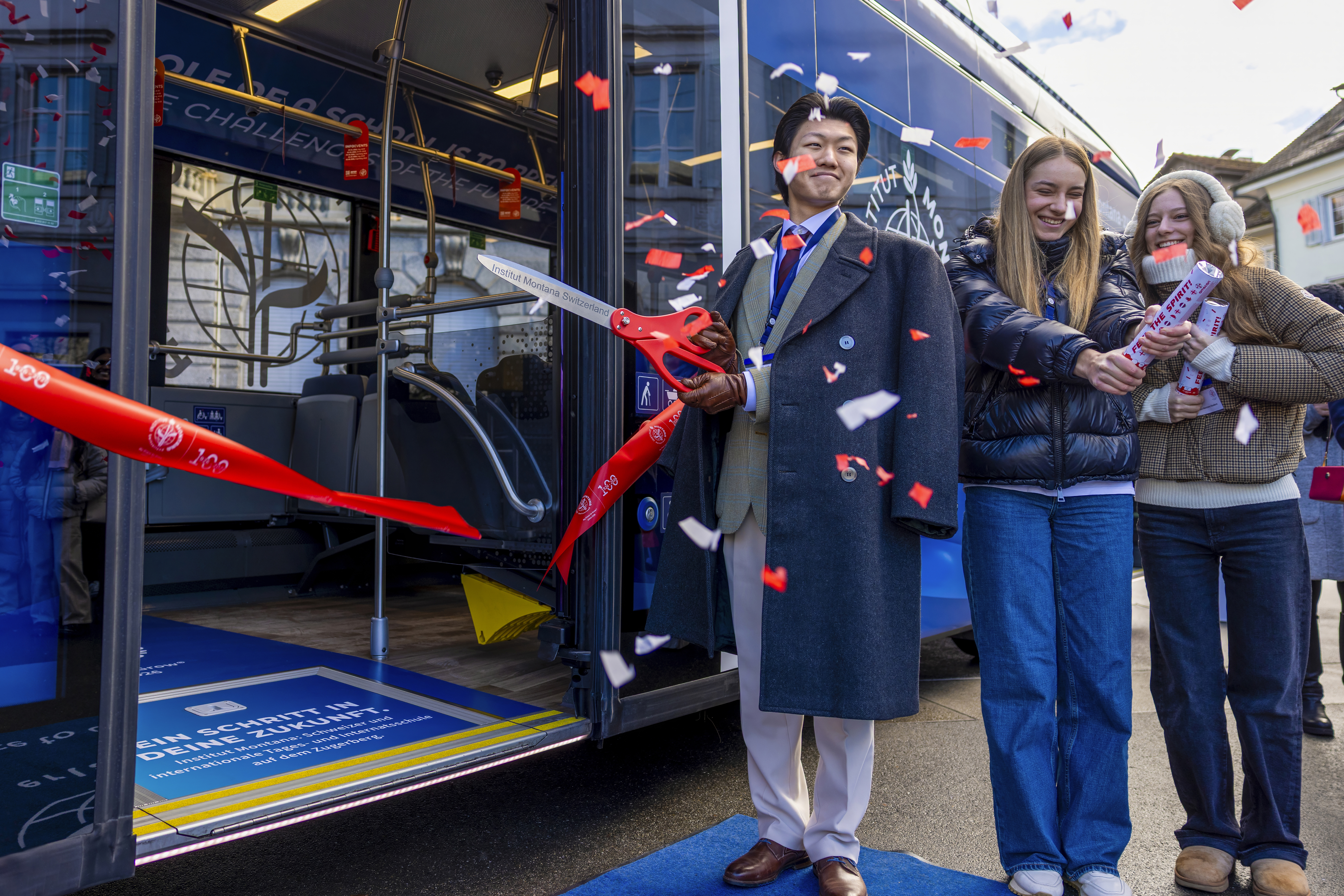Education of the 21st century – Transdisciplinary learning in a bilingual elementary school

At Institut Montana, we believe that school is much more than just the academics, it is a valuable experience, which will prepare children for modern life with its challenges. It is no longer simply enough to train them in Math, German, or Literature for a future job, which might not even exist in a few years due to digitalization. Modern education should be focusing on the skills, which are crucial to thriving in the 21st century, and this is where the creative approach of transdisciplinary learning comes into place.
Students at our Bilingual Elementary School do not only learn the school subjects of Lehrplan 21 but also develop the essential 21st-century skills, defined by Sir Ken Robinson:
- Curiosity: the ability to ask questions and explore how the world works.
- Creativity: the ability to develop new ideas and apply them in practice
- Criticism: the ability to analyze information and ideas, as well as develop reasoned arguments and judgments
- Communication: the ability to express thoughts and feelings clearly and confidently in a wide range of media
- Collaboration: the ability to work constructively with others
- Compassion: the ability to empathize with others and act accordingly
- Composure: the ability to connect with the inner world of emotions and develop a sense of personal harmony and balance.
- Citizenship: the ability to participate constructively in shaping society.
What is transdisciplinary learning?
Transdisciplinary learning enables students to create connections between various school subjects while exploring a relevant concept, issue, or problem. It integrates the perspectives of the common school disciplines to get a deeper understanding of the versatility of the concept.
Through this approach, which is linked to the children's interests and current events and trends in our time, the children should learn to apply their knowledge. The aim is to learn for life sustainably and not just to memorize specialized knowledge for an exam quickly. This should be made possible by transdisciplinary, cooperative, competence-oriented, and creative lessons in connection with digital media.
Why is transdisciplinary learning important?
Michael Gruneberg explains in his book "Theoretical Aspects of Memory" that our memory is context-based, meaning that we quickly lose knowledge if it is not connected to anything.
Transdisciplinary learning is important because it helps create these connections by getting the same idea across various subjects and explaining it in a practical way, which is easy to understand. It is so important nowadays that students learn to solve problems creatively. They need to know that there is often more than just one way to solve a problem.
Moreover, various studies show that varying learning methods and materials improve retention and recall of information by students.
The learning pyramid, developed by the U.S. National Training Laboratory, suggests that most students only remember about 10% of what they read from textbooks, but retain nearly 90% of what they learn through teaching others.
Transdisciplinary learning helps our teachers to apply various and the most effective teaching methods, as listed in the pyramid, and thus help students remember their lessons.

How does transdisciplinary learning look in a classroom?
The curriculum of the Bilingual Elementary School is built around 6 general themes for the year and all the subjects are linked around each theme. By keeping the general themes the same for each grade, teachers can provide consistency and track progression over the years.
All the lessons are very interactive, creative and promote teamwork. Our elementary school students work with tablets and M365 to develop critical digital skills.
Let us use the topic of paper waste as an example. At the beginning of the series of lessons dedicated to paper waste, elementary students were shown a video created by Green Peace, which portrayed rain forest destruction caused by paper production. Students then were asked to count how much paper they used during one week, including notebook pages, drawing paper, and toilet paper. The math teacher used their results to create a chart of paper usage and explain percentages. At the crafts lesson, students learned how paper was made in the past and were able to make their own paper. Students participated in poetry slams during English and German classes, where they wrote poems to inspire the world to stop wasting paper.
This topic inspired some of our elementary students to encourage their parents to switch to recycled paper and take a keen interest in environmental problems.
Advantages of transdisciplinary approach in education
Transdisciplinary learning offers many advantages compared to the traditional approach in education:
- Students develop divergent thinking and creativity. The modern education system fosters convergent thinking, which means applying a fixed set of rules to arrive at a single solution to the problem. On the other hand, divergent thinking is a more free-flowing process, leading to several creative solutions to a single task. Both divergent and convergent thinking are important, but encouraging only the latter can lead to loss of creativity and critical thinking, which are the essential skills in the 21st century.
- Students see more meaning in what they learn. Many students learn because they are told so by their school and their parents. The transdisciplinary approach connects one topic to many school subjects, allowing students to understand the topic much deeper, see the connections, and realize why they are learning about it. This system also makes it easier for them to remember what they learned.
- Students are more motivated. Connecting a topic to various school subjects requires a certain level of creativity from teachers. It makes the lessons more engaging and, as our experience shows, creates curiosity and motivation in students to discover one topic from different and sometimes even unexpected angles.
- Students learn a language of a problem. Transdisciplinary learning encourages students to look at one problem from various angles. They learn the versatile nature of a real-life situation, develop critical thinking and understand, that there is usually more than one way and more than one right solution to a single problem. This kind of thinking is very appreciated and sought after by many headhunters these days.
- Students build up confidence. The transdisciplinary approach encourages students to speak up their opinion in class, even though it might be wrong. It helps students build up confidence and talk more easily, without being afraid of punishment with bad grades or peer judgment.






